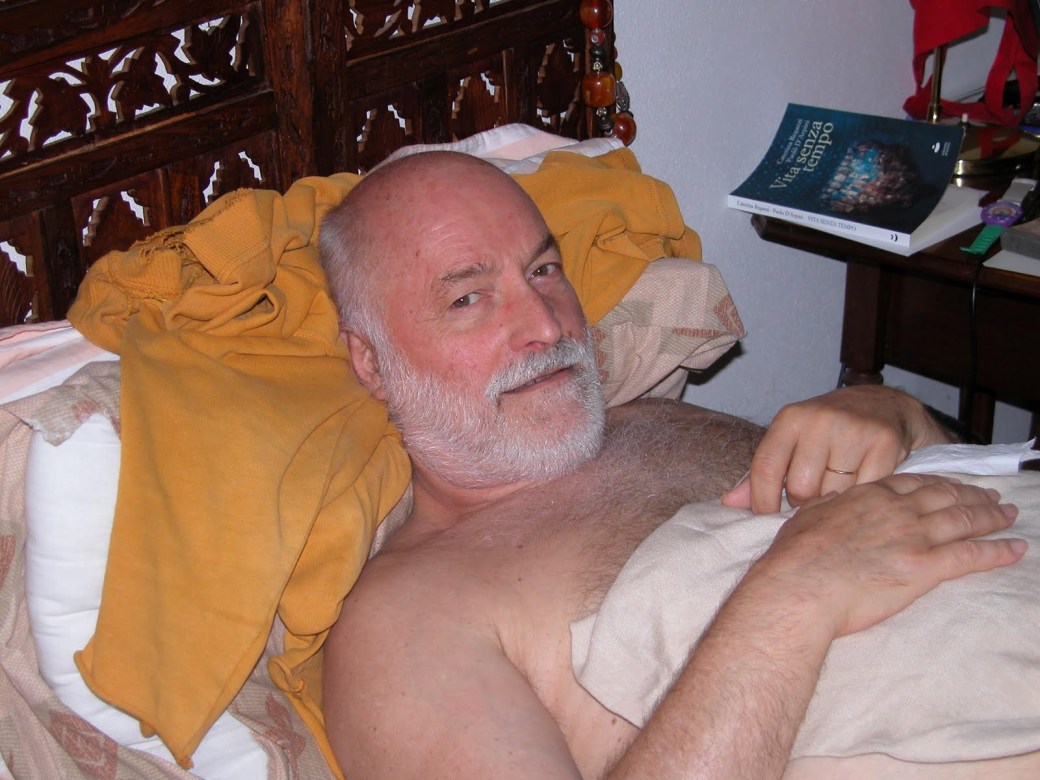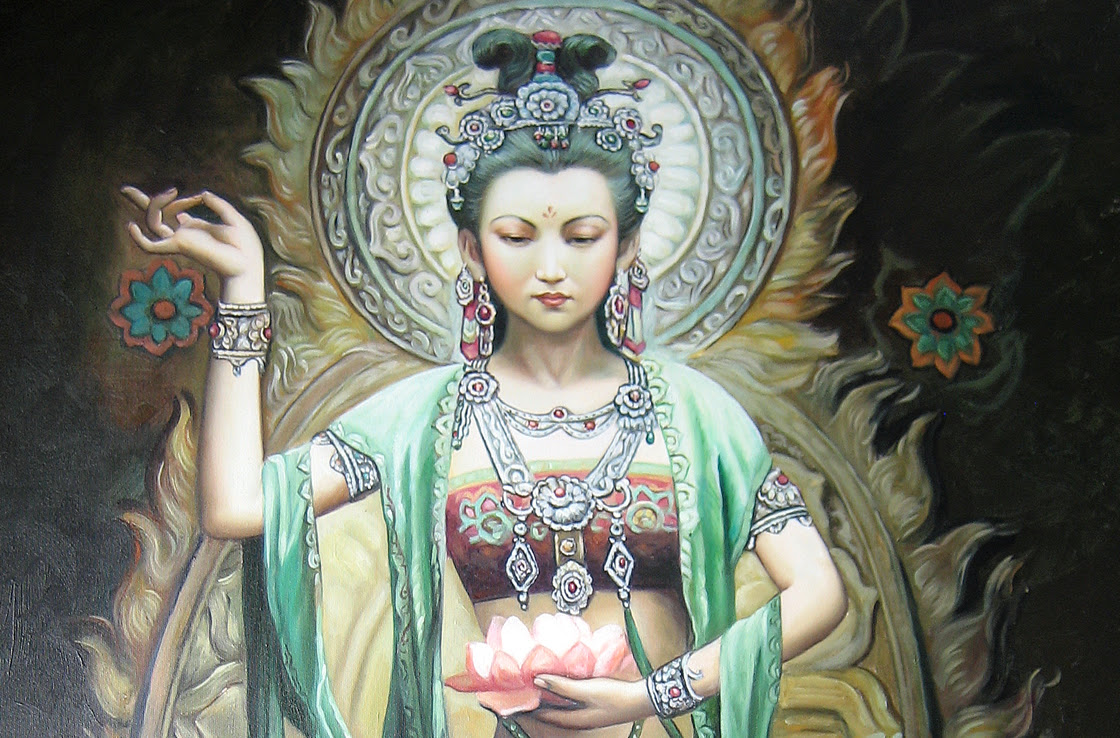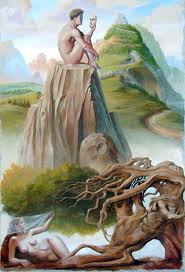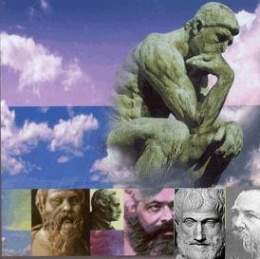We all act spontaneously, always, everyone puts into practice what they feel. There is an aura that proves it, there is a smell that announces it. You cannot behave differently than your thoughts indicate.
How and where do your thoughts come from?
Who chooses them?
Who decides one way of action rather than another?
Maybe desire?
Perhaps the will to reach an end?
And where does one reach something except in the world of appearances, in the dream of existence?
Hence the theory of karma that places man within a wheel. The same wheel that we see in the hamster cages. It moves because the hamster inside it makes it move. The wheel itself is inert. Therefore both in Taoism and in Advaita "non-acting" is proclaimed, in the sense of not performing actions with the aim of achieving.
However, in all sincerity with yourself, act, do not shy away from action out of fear. Krishna himself to Arjuna said: "If you refrain from acting your own nature will push you to do the deeds that are due to you". So act in accordance with your "Dharma / Karma" and leave the results to "God" ..."
And now a deepening: The Taoist "void" - ... if the true Tao to our perceiving determinist appears as a void, which for us corresponds to the emptiness of the self (of the individual conscience), it marks the blissful return in the silent matrix, which attracts and projects the experience of empirical thought and then reabsorbs it into the nothingness from which it comes. This kenosis of the Tao proceeds by its own nature and does not presuppose any creative or destructive will. And from here we understand the non-Taoist evaluation of a personal God.
The manifestation is only an appearance, a propensity appears in the mind because it is so in the nature of the mind. Accept it and move on. Live moment by moment observing everything that happens. Slowly you will realize that you will not perform the actions striving or in reaction to those of others, but they will be spontaneous answers, without searching for a definite "outcome".
According to the Taoist psychologist Alessandro Mahony for the Taoists there would therefore not be so much a cause effect but rather a synchronicity: "Not what it is, but what it means to me now."
"All our reasoning is based on the law of cause and effect, which operates as a succession. Something happens now, because something else happened then. The Chinese do not reason as much according to this horizontal line, which goes from the past to the future, through the present: they reason vertically, from what is in a place now to what is in another place now. In other words, they do not ask why, or what past causes, a certain order of what happens now; they ask themselves: What is the meaning of the things that happen together at this time? The word Tao is the answer to this question ". (Alan Watts, The meaning of happiness [109])
So a Taoist does not reason by following an ideal horizontal line of cause effect but rather by following a vertical line, trying to connect things that are in one place now and in another place now. The question that arises is: "What is the meaning of the things that happen together at this time? They therefore reason according to a concept that could be called synchronicity.
And again: "when a Westerner thinks he believes that such a fact is due to a kind of fatalism or determinism. [...] The first illusion is to believe that what is happening happens to him and that he is therefore a victim of circumstances. But if we are immersed in the original ignorance there is no other you than the thing that is happening. So this is not happening to us, it just happens. [...] The second illusion is to believe that what is happening now is the consequence of an event of the past. [...] We must be really naive to believe that the past causes what happens today. The past is similar to the wake left by a ship. At the end each trace disappears. [...] It is simple motion: everything starts now, so it is spontaneous: it is not determined [...], it is not even random [...]. The Tao is a certain type of order [...] which, however, is not precisely what we call order when we dispose an object in a geometric order, in boxes or in rows. If we look at a bamboo plant it is perfectly clear to us that the plant has its own order. [...] The Chinese call it Li [...]. Everyone tries to express the essence of Li. But the interesting thing is that although we know what it is, there is no way to define it ». (Alan Watts, The meaning of happiness [111] pages 17-18).
Is it difficult to reconcile the two concepts or not?
In truth Alan Watts is a great admirer of the Tao and has succeeded very well in identifying the salient points, he affirmed: "every form of control finally falls back on the controller". In fact in the Taoist tradition "Man conforms to the Earth, the Earth conforms to Heaven, Heaven conforms to the Tao, the Tao conforms to spontaneity".
Spontaneity is synonymous with naturalness, a subversive category in the artificial world of social contractualism and the techno-scientific domain.
And then what does it mean to perform "virtuous" actions with the intention of achieving them?
For example, how to constantly repeat the Nam Myoho Renge Kyo mantra (dedicated to the law of cause and effect) to realize desires?
Obviously it doesn't make sense to a Taoist. But it makes sense to "credit" a hypothetical personal "will" ("Ichinen" is called in Japanese). However, thought takes on a form, whenever it is desired, with more or less force according to intensity. But this process in Taoism - as in advaita - is considered a form of "slavery", of immersion in the illusion of "dream" (Samsara).
This does not mean that the dream do not exists, as long as one sleeps, and although it is not "true" it is "real" for the time it lasts ... until the moment of Awakening comes.
Paolo D'Arpini
Spontaneity is synonymous with naturalness, a subversive category in the artificial world of social contractualism and the techno-scientific domain.
And then what does it mean to perform "virtuous" actions with the intention of achieving them?
For example, how to constantly repeat the Nam Myoho Renge Kyo mantra (dedicated to the law of cause and effect) to realize desires?
Obviously it doesn't make sense to a Taoist. But it makes sense to "credit" a hypothetical personal "will" ("Ichinen" is called in Japanese). However, thought takes on a form, whenever it is desired, with more or less force according to intensity. But this process in Taoism - as in advaita - is considered a form of "slavery", of immersion in the illusion of "dream" (Samsara).
This does not mean that the dream do not exists, as long as one sleeps, and although it is not "true" it is "real" for the time it lasts ... until the moment of Awakening comes.
Paolo D'Arpini

Testo Italiano:
Tutti agiamo in modo spontaneo, sempre, ognuno mette in pratica quel che sente. C'è un'aura che lo dimostra, c'è un odore che lo annuncia. Tu non puoi comportarti diversamente da come i tuoi pensieri indicano.
Come e da dove sorgono i tuoi pensieri?
Chi li sceglie?
Chi decide una via di azione piuttosto che un'altra?
Forse il desiderio?
Forse la volontà di raggiungere un fine?
E dove si raggiunge qualcosa se non nel mondo delle apparenze, nel sogno dell'esistenza?
Da qui la teoria del karma che pone l'uomo all'interno di una ruota. La stessa ruota che vediamo nelle gabbiette dei criceti. Si muove perché il criceto che ci sta dentro la fa muovere. In se stessa la ruota è inerte. Perciò sia nel taoismo che nell'advaita si proclama "il non agire", nel senso di non compiere azioni con la finalità di un raggiungimento.
Però, in tutta sincerità con te stesso, agisci, non rifuggire dall'azione per paura. Lo stesso Krishna ad Arjuna disse: "Se rifuggi dall'agire la tua stessa natura ti spingerà a compiere le azioni che sono a te dovute". Perciò agisci conformemente al tuo "Dharma/Karma" e lascia i risultati al "Cielo"...
Ed ora un approfondimento: Il “vuoto” taoista - ... se il vero Tao al nostro percepire determinista appare come un nulla, che per noi corrisponde al vuoto del sé (della coscienza individuale), esso segna il ritorno beato nella matrice silenziosa, che attira e proietta l’esperienza del pensiero empirico e poi lo riassorbe nel nulla da cui proviene. Questa kenosi del Tao procede per sua propria natura e non presuppone alcuna volontà creatrice o distruttrice. E da qui si comprende la non valutazione taoista per un Dio personale.
La manifestazione è solo una apparenza, appare nella mente una propensione perché così è nella natura della mente. Accettala e passa oltre. Vivi momento per momento osservando tutto ciò che avviene. Pian piano ti accorgerai che non compirai le azioni sforzandoti o in reazione a quelle degli altri, ma saranno spontanee risposte, senza ricerca di un "esito" definito.
Secondo lo psicologo taoista Alessandro Mahony per i taoisti non esisterebbe quindi tanto una causa effetto ma piuttosto una sincronicità: "Non che cosa è, ma che significato ha per me, ora".
«Tutto il nostro ragionamento si basa sulla legge di causa ed effetto, che opera come una successione. Qualcosa accade ora, perché qualcos'altro è accaduto allora. I cinesi non ragionano tanto secondo questa linea orizzontale, che va dal passato al futuro, attraverso il presente: ragionano verticalmente, da ciò che è in un posto ora a ciò che è in un altro posto ora. In altre parole non si chiedono perché, o per quali cause passate, un certo ordine di cosa avvenga ora; si chiedono: Qual è il significato delle cose che avvengono insieme in questo momento? La parola Tao è la risposta a questa domanda». (Alan Watts, Il significato della felicità [109])
Quindi un Taoista non ragiona seguendo una ideale linea orizzontale di causa effetto ma, piuttosto, seguendo una linea verticale, cercando di connettere tra loro cose che sono in un posto ora ed in un altro posto ora. La domanda che si pongono è: "qual è il significato delle cose che avvengono insieme in questo momento? Ragionano quindi secondo un concetto che potrebbe essere chiamato sincronicità.
Ed ancora: «quando un occidentale sente di pensare, crede che un tal fatto sia dovuto ad una specie di fatalismo o determinismo. [...] La prima illusione è quella di credere che ciò che sta accadendo accada a lui e che quindi sia vittima delle circostanze. Ma se siamo immersi nell'ignoranza originaria non esiste un tu diverso dalla cosa che sta accadendo. Quindi la cosa non sta succedendo a noi, succede e basta. [...] La seconda illusione è quella di credere che ciò che sta accadendo ora è la conseguenza di un evento del passato. [...] Dobbiamo essere davvero ingenui per credere che il passato provochi quanto avviene oggi. Il passato è simile alla scia lasciata da una nave. Alla fine ogni traccia scompare. [...] È moto semplice: tutto comincia adesso, perciò è spontaneo: non è determinato [...], non è nemmeno casuale [...]. Il Tao è un certo tipo di ordine [...] che però non è precisamente ciò che noi definiamo ordine quando disponiamo un oggetto in un ordine geometrico, in scatole od in file. Se osserviamo un pianta di bambù ci è perfettamente chiaro che la pianta possiede un suo ordine. [...] I cinesi lo chiamano Li [...]. Tutti cercano di esprimere l'essenza del Li. Ma la cosa interessante è che nonostante si sappia cosa sia, non c'è modo di definirla». (Alan Watts, Il significato della felicità [111] pag. 17-18).
E' difficile conciliare i due concetti o no?
In verità Alan Watts è un grande estimatore del Tao ed è riuscito molto bene ad individuarne i punti salienti, egli affermò: "ogni forma di controllo ricade infine sul controllore". Infatti nella tradizione Taoista «L’uomo si conforma alla Terra, la Terra si conforma al Cielo, il Cielo si conforma al Tao, il Tao si conforma alla spontaneità».
La spontaneità è sinonimo di naturalezza, categoria eversiva nel mondo artificiale del contrattualismo sociale e del dominio tecno-scientifico.
Ed allora che significato ha compiere azioni "virtuose" con l'intento di un raggiungimento?
Come ad esempio ripetere costantemente il mantra Nam Myoho Renge Kyo (dedicato alla legge di causa effetto) per realizzare i desideri?
Evidentemente non ha un senso per un taoista. Però ha un senso per "accreditare" un'ipotetica "volontà" personale ("Ichinen" si chiama in giapponese). Comunque il pensiero assume una forma, ogni qualvolta lo si desidera, con più o meno forza secondo l'intensità. Ma questo processo nel taoismo - come nell'advaita - è ritenuto una forma di "schiavitù", di immersione nell'illusione del "sogno" (Samsara).
Ciò non toglie che il il sogno esiste, finché si dorme, e pur non essendo "vero" è comunque "reale" per il tempo che dura... finché non giunge il momento del Risveglio.
Paolo D'Arpini
Come e da dove sorgono i tuoi pensieri?
Chi li sceglie?
Chi decide una via di azione piuttosto che un'altra?
Forse il desiderio?
Forse la volontà di raggiungere un fine?
E dove si raggiunge qualcosa se non nel mondo delle apparenze, nel sogno dell'esistenza?
Da qui la teoria del karma che pone l'uomo all'interno di una ruota. La stessa ruota che vediamo nelle gabbiette dei criceti. Si muove perché il criceto che ci sta dentro la fa muovere. In se stessa la ruota è inerte. Perciò sia nel taoismo che nell'advaita si proclama "il non agire", nel senso di non compiere azioni con la finalità di un raggiungimento.
Però, in tutta sincerità con te stesso, agisci, non rifuggire dall'azione per paura. Lo stesso Krishna ad Arjuna disse: "Se rifuggi dall'agire la tua stessa natura ti spingerà a compiere le azioni che sono a te dovute". Perciò agisci conformemente al tuo "Dharma/Karma" e lascia i risultati al "Cielo"...
Ed ora un approfondimento: Il “vuoto” taoista - ... se il vero Tao al nostro percepire determinista appare come un nulla, che per noi corrisponde al vuoto del sé (della coscienza individuale), esso segna il ritorno beato nella matrice silenziosa, che attira e proietta l’esperienza del pensiero empirico e poi lo riassorbe nel nulla da cui proviene. Questa kenosi del Tao procede per sua propria natura e non presuppone alcuna volontà creatrice o distruttrice. E da qui si comprende la non valutazione taoista per un Dio personale.
La manifestazione è solo una apparenza, appare nella mente una propensione perché così è nella natura della mente. Accettala e passa oltre. Vivi momento per momento osservando tutto ciò che avviene. Pian piano ti accorgerai che non compirai le azioni sforzandoti o in reazione a quelle degli altri, ma saranno spontanee risposte, senza ricerca di un "esito" definito.
Secondo lo psicologo taoista Alessandro Mahony per i taoisti non esisterebbe quindi tanto una causa effetto ma piuttosto una sincronicità: "Non che cosa è, ma che significato ha per me, ora".
«Tutto il nostro ragionamento si basa sulla legge di causa ed effetto, che opera come una successione. Qualcosa accade ora, perché qualcos'altro è accaduto allora. I cinesi non ragionano tanto secondo questa linea orizzontale, che va dal passato al futuro, attraverso il presente: ragionano verticalmente, da ciò che è in un posto ora a ciò che è in un altro posto ora. In altre parole non si chiedono perché, o per quali cause passate, un certo ordine di cosa avvenga ora; si chiedono: Qual è il significato delle cose che avvengono insieme in questo momento? La parola Tao è la risposta a questa domanda». (Alan Watts, Il significato della felicità [109])
Quindi un Taoista non ragiona seguendo una ideale linea orizzontale di causa effetto ma, piuttosto, seguendo una linea verticale, cercando di connettere tra loro cose che sono in un posto ora ed in un altro posto ora. La domanda che si pongono è: "qual è il significato delle cose che avvengono insieme in questo momento? Ragionano quindi secondo un concetto che potrebbe essere chiamato sincronicità.
Ed ancora: «quando un occidentale sente di pensare, crede che un tal fatto sia dovuto ad una specie di fatalismo o determinismo. [...] La prima illusione è quella di credere che ciò che sta accadendo accada a lui e che quindi sia vittima delle circostanze. Ma se siamo immersi nell'ignoranza originaria non esiste un tu diverso dalla cosa che sta accadendo. Quindi la cosa non sta succedendo a noi, succede e basta. [...] La seconda illusione è quella di credere che ciò che sta accadendo ora è la conseguenza di un evento del passato. [...] Dobbiamo essere davvero ingenui per credere che il passato provochi quanto avviene oggi. Il passato è simile alla scia lasciata da una nave. Alla fine ogni traccia scompare. [...] È moto semplice: tutto comincia adesso, perciò è spontaneo: non è determinato [...], non è nemmeno casuale [...]. Il Tao è un certo tipo di ordine [...] che però non è precisamente ciò che noi definiamo ordine quando disponiamo un oggetto in un ordine geometrico, in scatole od in file. Se osserviamo un pianta di bambù ci è perfettamente chiaro che la pianta possiede un suo ordine. [...] I cinesi lo chiamano Li [...]. Tutti cercano di esprimere l'essenza del Li. Ma la cosa interessante è che nonostante si sappia cosa sia, non c'è modo di definirla». (Alan Watts, Il significato della felicità [111] pag. 17-18).
E' difficile conciliare i due concetti o no?
In verità Alan Watts è un grande estimatore del Tao ed è riuscito molto bene ad individuarne i punti salienti, egli affermò: "ogni forma di controllo ricade infine sul controllore". Infatti nella tradizione Taoista «L’uomo si conforma alla Terra, la Terra si conforma al Cielo, il Cielo si conforma al Tao, il Tao si conforma alla spontaneità».
La spontaneità è sinonimo di naturalezza, categoria eversiva nel mondo artificiale del contrattualismo sociale e del dominio tecno-scientifico.
Ed allora che significato ha compiere azioni "virtuose" con l'intento di un raggiungimento?
Come ad esempio ripetere costantemente il mantra Nam Myoho Renge Kyo (dedicato alla legge di causa effetto) per realizzare i desideri?
Evidentemente non ha un senso per un taoista. Però ha un senso per "accreditare" un'ipotetica "volontà" personale ("Ichinen" si chiama in giapponese). Comunque il pensiero assume una forma, ogni qualvolta lo si desidera, con più o meno forza secondo l'intensità. Ma questo processo nel taoismo - come nell'advaita - è ritenuto una forma di "schiavitù", di immersione nell'illusione del "sogno" (Samsara).
Ciò non toglie che il il sogno esiste, finché si dorme, e pur non essendo "vero" è comunque "reale" per il tempo che dura... finché non giunge il momento del Risveglio.
Paolo D'Arpini











